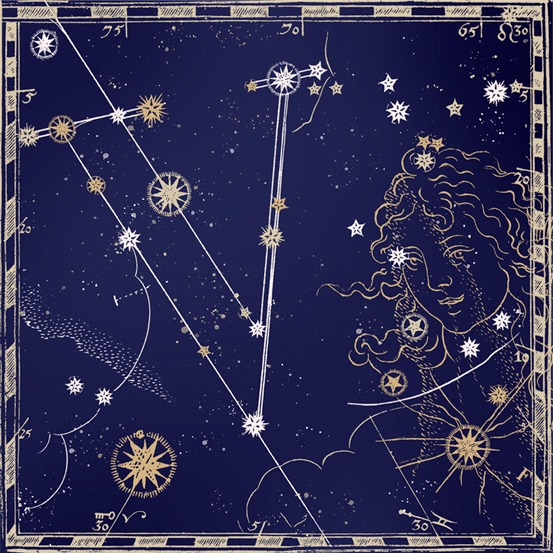Portugal with Love Issue
Monsaraz has been invented. By this I mean that it is a cardinal point for tourists who are enthusiastic about wine and gastronomic heritage and, therefore, culture. But if there are unexplored gaps, we need to reinvent it.
In a country where, even when it was glittering with gold, with all the opulence that came from the discoveries, misery raged among the most disadvantaged, an extra mouthful was sometimes too much. For centuries and centuries, unwanted newborns (or, worse still, more than wanted, but impossible to support) were abandoned at the doors of churches and convents. Called “exposed”, these children led to the creation, from the 16th century onwards, of the “wheel” at the front of these monuments. It was a kind of rotating cylinder, mounted vertically and open on one side, to prevent direct contact and encourage anonymity. On March 24, 1783, Queen Maria I recognized the Roda dos Expostos by decree. It began to operate in the Casas da Roda, associated with the Santas Casas and built in the most important cities and towns in the kingdom. The exposed were given the name of the saint corresponding to the day of collection. There were no inquiries or investigations to find out the parents' names. They could, however, claim their children at any time, and everything they brought with them at the time of “delivery” was kept and recorded. Until they were seven years old, the exposed were left in the care of the nannies. After that age, they returned to the Casa da Roda until they were 12 when they were given as servants to whoever paid the best wages. The high mortality rate associated with this practice, which emerged as a response to infanticide, abortion and child abandonment, led to its definitive extinction in 1867. But within these walls, where history haunts us with vivid testimonies at every turn, it is still very much visible. Anyone passing through Monsaraz can do so without returning. But you should linger. It's counterproductive, to say the least, to enter through the Porta da Vila, be amazed by the sidewalk made of vertical slabs of schist and the Clock Tower on your left, follow Rua de Santiago to the Casa da Inquisição, see the great Alqueva (the largest artificial lake in Europe) from its walls, eat ice cream and then leave it all behind, without having the slightest idea of the treasure you're missing. What's worse is having that idea and leaving anyway.
For those who have never wondered why the capital of the council, Reguengos, “belongs” to Monsaraz, while Monsaraz is just a fortress (and the town it encloses), and because there are things that time has clouded over, let's talk about the fascinating branch of onomastics (the study of proper names) that is toponymy, which studies the names of places, their origin and evolution. From this perspective, it's obvious that Monsaraz was once the residential center of this plain and that, somewhere in history, the Reguengos (or Realengos, both names given to the lands that belonged to the King and to enjoy which - whether for hunting or agriculture - you had to pay him rights and fees) stripped him of this status. The Reguengos, obtained by pressure, i.e. by occupying a territory vacated by the expulsion of the Muslims, were reduced due to large donations from the crown to the clergy and nobility, but they were only extinguished by the laws of Mouzinho da Silveira in 1834. To be more precise, Monsaraz was the county seat until 1838. The process of transferring it to the town of Reguengos was so complex that it was not completed until 1851 when Reguengos had already become a town. Curiously, the geographical boundaries have been the same since 1270, when King Afonso III granted a charter to the town of Monsaraz, making it one of the oldest administrative municipalities in southern Portugal. To understand the importance of this place, attested to by various testimonies of human presence since prehistoric times (perhaps the most significant in the world), which we'll talk about later, we always have to take into account the presence of a very flowing watercourse, the Guadiana, in a dry region with very punishing summers. Monsaraz, situated on a considerable elevation for this area, was already a castro (Copper Age or Iron Age settlement, with circular houses made of schist - in this case - or granite) or even a cividade, that ancient name for a city, better known here as a citânia (from the term cytian, which refers to the fortified settlements of the British Isles), long before the arrival of the Romans. Around 900 BC, the Castro civilization already had a strong presence from Galicia to the south of Portugal and five hundred years later it established relations with the Italian peninsula, through the túrdulos, this tribe that inhabited a vast territory that went from the Guadiana river to where the city of Jaén is today, in other words, from the east of Alentejo (which includes Monsaraz) to Andalusia. There, around 500 BC, some traces of Celtic culture began to reveal themselves, so much so that today there are studies, both historical and genetic, which prove that it was the peninsular megaliths that gave rise to the Celtic culture, which later migrated north and not the other way around. Stonehenge, as we'll see later, can thank the Almendres Cromlech and the many dolmens and menhirs scattered throughout the Alto Alentejo.
It's curious that, in a district where its capital has the most famous Roman Temple in Portugal, built with marble from Estremoz, on top of the Cathedral, the evidence of this civilization is scarce. Of course, they were here, they were all over Portugal, Évora was Liberalitas Julia (but the earlier Celts called it Ebora), and there are also the public baths (excavated inside the Town Hall building), and parts of the wall. Further down, in Beja, stood Pax Julia. Even today, numerous villas (residences of the wealthier classes) can still be found through excavations with the aim of building tourist infrastructures. But, as we know, history is invariably written by the victors and all civilizations try to hide the testimonies of their predecessors. In Évora, a monumental triumphal arch, ornate like no other on the Iberian Peninsula, was demolished in 1570 to make way for the façade of the Church of Santo Antão in Praça do Giraldo. In Monsaraz, the Herdade dos Canhões Agricultural Society is so-called because the locals always referred to the two Roman columns there as such. However, the toponym Monsaraz, which is currently in force, and which guarantees that it comes from Monte Xarez (or sherry), a term that has its origins in the Arabic saris or sharish, and which designates a vegetation of cistus, is wrong. Whether on the banks of the Guadiana or at the top of the cabeços (a high hill in “Alentejo”), cistus was, as it is today, abundant throughout the Alentejo. No Arab, a people given to poetry and literature, would have named such an important fortification after a triviality. Monsaraz derives from the Latin Mons Serranus, meaning “Mountain in the Shape of a Mountain”, which can be proven by looking at it from any angle, whether from Reguengos or Spain and yes, it was the Romans who coined this epithet. This relationship with the cistus is the work of a doctor and archaeologist by the name of Pires Gonçalves, but it has been passed down through oral tradition. However, there are few studies dedicated to the Romanization of Monsaraz and its surroundings. This can be explained by the later arrival of the Visigoths, who came with a thirst for revenge. It should be understood that, until the 5th century, these Germanic people, called Barbarians by the Romans (along with other warring confederations such as the Franks, Burgundians, Alamans, Vandals and Ostrogoths), were mercenaries in the service of Rome. Until they decided to demand payment for their services. When they were refused, they sacked the Eternal City and headed for the Iberian Peninsula, continuing the age-old technique of warfare, to assault the centers of power. Fervent Christians, dedicated themselves to erecting their monuments on top of everything made of Roman marble until not a single column remained.
In the 8th century, the Moors took over a large part of the Iberian Peninsula and Monsaraz, an important strategic point, was no exception. The marks left behind go far beyond the architecture. It was the advances of an avant-garde culture for its time that marked these parts forever. An elaborate irrigation system was installed that allowed the cultivation of arid and semi-arid areas and the region became a fertile center of agricultural production, from cereals to olive groves. In its streets, many more than just the soldiers in charge of defending this fortified settlement strolled, but also artisans, merchants and members of the local administration, in a cultural exchange between Muslim, Christian and Jewish communities that allowed for the exchange of ideas, technologies, products and cultural practices. The Hermitage of Saint John the Baptist, located in the bastion of the same name, which was a Qubba (a building characteristic of Islamic architecture, with a square base and spherical dome, which served as a mausoleum or place of pilgrimage) survived the reconquest. Alentejo gastronomy itself so celebrated both here and abroad, was born with the introduction of top-quality olive oil, garlic and the unavoidable aromas of coriander and mint, a heritage that is still celebrated today with all the intensity it deserves. But as good times always come to an end, the Christian Reconquest took place (the term “reconquest” presupposes that what had already been Christian at the time of the Visigoths was once again conquered) and Geraldo Sem Pavor became famous when he conquered Monsaraz in 1167. However, two years later, King Afonso Henriques was defeated in the Battle of Badajoz and the Almohad Caliphate recovered the fortification. It wasn't until 1232, and with the help of the Templars, that King Sancho II managed to conquer this post once and for all, giving them these domains. The Templar Gomes Martins Silvestre was the first settler of Monsaraz, whose tomb is in the Mother Church of Santa Maria da Lagoa.This settlement followed in the hands of another knight of the same order, Martim Anes Zagallo, after King Afonso III had granted a charter in 1276, and the first significant constructions began. In 1314, the French king Philip IV (the Beautiful) and Pope Clement V condemned the Templars to the stake and demanded that all their assets in other countries be seized. Legend has it that those who escaped fled to Portugal and there, under the veiled protection of King Dinis, they and their property passed to the Order of Christ in 1319. Monsaraz became part of the Castro Marim dependency, the keep was rebuilt and the town's fence was extended, which has remained intact to this day. In 1385, on the verge of the end of the dynastic crisis, the fortification fell into the hands of the King of Castile but was recovered by D. Nuno Álvares Pereira before the Battle of Aljubarrota. There was still time, in the context of the Restoration War, for King João IV to modernize its walls, adapted for the artillery of the time, due to its proximity to the Guadiana and Spain. There was no lack of warning: we're going back in history. By the hand of Luis Lobato de Faria (relax, Rosa was only her father's cousin and never met him), the highest authority in the study of the region's proto-history. He was born in Mozambique, grew up in Cascais and, at the University of Évora, studied History and Cultural Heritage, specializing in Commercial Archaeology (the kind that has to be consulted before a hotel is built by a large economic group, a “practice” that is falling into, shall we say, “disuse”). He worked in Spain, in the United Kingdom, was in charge of the work to reveal Ammaia, the Roman city at the foot of Marvão, and then married a local daughter. “Now I belong here, people share information and knowledge with me,” he jokes, but the truth is that he has a tourist activities company in his field, which is in healthy demand. And there couldn't be a better place. The district of Évora has 2,000 megalithic monuments. This is the richest collection in the world and leads us to conclude that megalithism was born here. “We don't know where it came from, but it traveled from here to the rest of Europe,” he says. We're talking about testimonies from the time when man was a hunter-gatherer, animism. This doesn't mean that he was nomadic. But he depended on the elements and had a much greater connection with nature. Their deities were there, all around them. They had sacred rocks, sacred fountains, and sacred trees. Their presence was so strong that there are still remnants of it today. “We have an olive tree here that is three thousand years old. People call it the Mother Olive Tree, the mother of all olive trees. There is an intimate relationship between the people and the ancient religions,” he says. This is due to this resacralization. The hunter-gatherer had his sacred stone, but then society became more complex and the megaliths, who already worshipped deities, covered this stone with a dolmen, over which the Iberian tribes erected a sanctuary that the Romans later covered with a templete (a temple without the gigantism that characterized the great cities), the Visigoths demolished it and used its stones to build a chapel, which in the meantime gave way to a Muslim qubba and was finally resacralized with a chapel. Luís assures us that the hundreds of isolated hermitages dotted around the area attest to the presence of very ancient sacred places. And this is passed down from generation to generation, it's perhaps a matter of blood rather than the fruit of oral tradition, and there are phenomena of worship that may seem strange to “city folk”. The Rocha dos Namorados, in Corval, Reguengos Council, is proof of this. A mushroom-shaped menhir where, even today, unmarried girls go on Easter Monday to throw stones at the top with their left hand, facing backward and after taking seven steps. Each stone that doesn't make it to the top represents a year of waiting for marriage. Nowadays, there are also people who “ask” for rain. The detail is in the megalithic “dimples” at the top, from which powder was taken for ingestion, a very ancient form of medicine, to obtain minerals that were not present in food. And if it were an extremely rare practice, it wouldn't have a name: Geofasia. In Monsaraz, until very recently, women went to get married in the Catholic church within the walls. But on their way back, they would pass by the Rocha da Noiva to make offerings to other gods. Schist plaques, a megalithic idol that accompanied the dead, are not only scattered throughout the municipality but were also produced for the whole of the Iberian Peninsula in Águas Frias, a nearby village belonging to Alandroal. Alandroal is also home to the temple of Endovelicus, worshipped by the Iron Age tribes, allies of the Phoenicians, arch-enemies of the Romans, and which was so important that, when the Romans arrived, they replaced it with a temple using the same stones. José Leite de Vasconcelos tried to remove them and take them to Lisbon, and so the National Archaeological Museum was born. Luis Lobato de Faria regrets the fact that all this is not being used as much as it should be by tourists: “It's not all wine and migas. And the more you neglect it, the more you lose. In Reguengos, and only since agricultural machinery began to appear because intensive olive groves and giant vineyards are not new, 170 monuments have disappeared in the last 70 years, which represents 70% of the municipality's megalithic heritage. This includes those that were flooded by the Alqueva Dam, yes, but the great lake isn't the only culprit. Just recently, a 700-year-old Gothic portal was destroyed in Estremoz. In Elvas, a UNESCO World Heritage Site, they demolished a chapel over 500 years old and a watchtower another 700. They could have called in archaeology, as they say, to do the survey. They didn't. And for what? Hotels, of course!” Luis is writing a book, which will be entitled Sacred Landscapes, and we can tell you first hand: “It's non-fiction, scientific, but without being boring.” This interview was sponsored by three Sharish gin and tonics, probably the best Portuguese gin, produced here, along with the best olive oil and, of course, the best wine.
Translated from the original in Vogue Portugal's "Portugal With Love" Issue, published June 2024. Full stories and credits in the print issue.
Most popular
.jpg)

Relacionados
.jpg)
.jpg)




